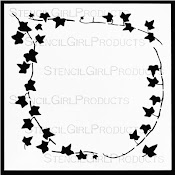StencilGirl Talk: Mary Beth Shaw's VLOG: March 2022
-
StencilGirl Talk: Mary Beth Shaw's VLOG: March 2022: Join Mary Beth in
Amsterdam and Paris! Click here for more information and registration!
Monday, December 7, 2015
Friday, December 4, 2015
Subscribe to:
Comments (Atom)




















































































